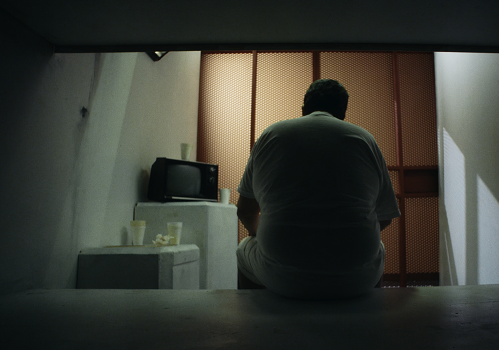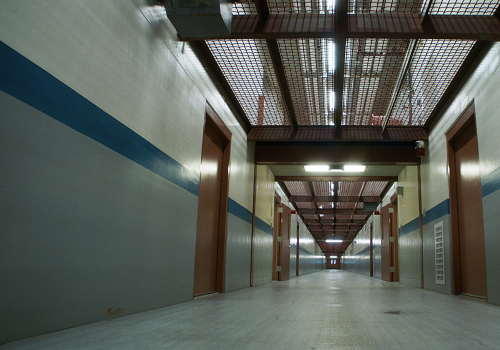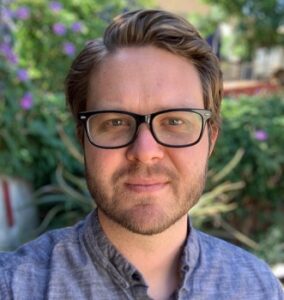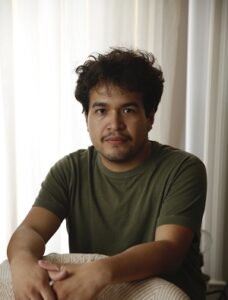Approximately 122,000 people sit in solitary confinement in the United States prison system today. And that’s troubling. With research demonstrating that the practice can cause significant mental, physical and emotional harm, the reality is troubling. Though the Department of Justice began to investigate the concerns around the rising population of prisoners in solitary confinement in 2023, federal prisoners only account for 145,000 of the 2 million people in U.S. prisons, jails and detention centers (each state administers its own prison system), according to the Prison Policy Initiative.
One documentary tackles the issue head-on with the backdrop the largest hunger strike in U.S. history that took place in 2013 by 30,000 prisoners as a peaceful protest against solitary confinement. The primary focus of the film is where that hunger strike began: Pelican Bay. The supermax prison on the California-Oregon border opened in 1989 and was designed specifically for mass-scale solitary confinement.
For decades, it held men alone in tiny cells, indefinitely (those interviewed for the documentary spent decades there). That is, until that fateful day in 2013 when a number of men stopped eating and set in motion hunger strikes in Pelican Bay and other prisons across the country (and beyond).
With its recent world premiere at the Hot Docs International Film Festival, The Strike features interviews with the hunger strikers, their family members, former prison designers, wardens, bureaucrats and a journalist who had been covering the issue for years. But the film goes deeper than solitary confinement.
Through compelling firsthand testimonies, the story touches upon issues of social justice, racial injustice, prison reform, human rights and the power of a few individuals to start a non-violent movement that would have a significant impact on policy and our perception of incarceration. What’s more, it serves as an inspiration for what’s possible in prison reform across the U.S.
SEE Change spoke with the co-directors of The Strike – Lucas Guilkey and JoeBill Muñoz – about the issue of solitary confinement, the challenges of prison reform, the far-reaching impact of their film and the hope that these hunger strikers can offer others looking to effect change.
What inspired you to make this film? Why now?
Lucas first came to this story in 2013 when he was filming with the families of the men protesting solitary confinement. It was when hearing how long term isolation not only impacted the incarcerated men, but their families, that Lucas thought a deeper story needed to be told. JoeBill joined later when some of the hunger strikers were released from solitary confinement then from prison altogether. Meeting those men and hearing their stories left such a lasting mark that propelled the next five years of making the film.
How common is the use of solitary confinement in U.S. prisons? Do some states practice it more than others?
The film focuses on California’s particular brand of solitary confinement, but nationwide the US is estimated to hold more than 120,000 people in solitary confinement. Studies have shown 3-8% of people incarcerated in the US are in isolation, but make up 50% of prison suicides. Each state has its own criminal justice system and federal law does not regulate state prisons. This is an issue and movement happening in all 50 states, but Texas leads the country with the most people in solitary confinement for more than 10 years.
In this specific prison, inmates were often held in confinement for decades – and the criteria used to put them there seems overly broad. Is that a common approach? Tell us more about the challenges these inmates faced that led to their peaceful protest?
Yes, the protest was challenging the administrative process that allowed the prison to hold men indefinitely in isolation. Challenging this administrative process was very difficult because evidence used against incarcerated people is often confidential, there was no right to an attorney, and appeals would go to the same entity you were appealing to.
In 2013, the largest hunger strike in U.S history was set in motion by those incarcerated in Pelican Bay prison
Was it difficult to speak with prison authorities for this film?
While working at the Center for Investigative Reporting on another documentary, JoeBill met investigative journalist Michael Montgomery, who had done extensive reporting on Pelican Bay. We were very lucky that Michael was excited about the film and wanted to join the team. Our collaboration led us to interview several former prison officials, helped us obtain confidential footage from inside Pelican Bay during the height of the hunger strike, and eventually allowed us to film inside Pelican Bay.
Has this story inspired other activism versus solitary confinement? Do you anticipate more legal challenges and/or protests?
Last year the Houston Chronicle reported that incarcerated Texans recently waged a hunger strike of their own, leading Texas legislators to propose limits to the use of solitary. In December 2023, Pennsylvania state legislators proposed a bill to stop isolating incarcerated people with diagnosed health problems and mental illness. But the practice still affects most incarcerated Pennsylvanians, prompting a recent class lawsuit against the state’s Department of Corrections.
In New York City, according to the HALT Solitary coalition, “solitary confinement is almost exclusively inflicted on Black and Brown people, who make up over 90% of all people in NYC jails.” The city council has recently passed legislation to limit the use of solitary, but Mayor Eric Adams has vetoed it.
Because of the high amount of incarcerated people in the United States, this is an issue and movement that is only continuing to grow.
Any other last thoughts about the future of prison reform in the U.S?
Shortly after the 2013 strike, Supreme Court Justice Anthony Kennedy said that “solitary confinement literally drives men mad” and declared the US prison system broken. Today, solitary confinement remains a pressing issue across the country. In California, solitary is still allowed for up to five years, and only one state, New Jersey, has banned solitary confinement for more than 20 days. The hunger strikes helped to inspire the creation of the United Nations’ “Mandela Rules” to limit isolation to 15 days, which activists are trying to make mandatory in all 50 US states.
Lucas Guilkey was born and raised in California, has spent much of his career investigating systems of power and telling stories of those on the frontlines of fighting oppression. His filmmaking is rooted in empathy and shaped by a commitment to racial justice and social movements.
JoeBill Muñoz is a Mexican-American filmmaker whose work strives to illuminate the most invisible injustices behind people’s everyday struggles for happiness. From Texas, his love for making documentaries started as a teen, lugging around a VHS camcorder through sweltering football fields to tell the stories of kids like him with big dreams. While his work has taken him to many faraway places, he still focuses his lens on hard working people, who never give up.




